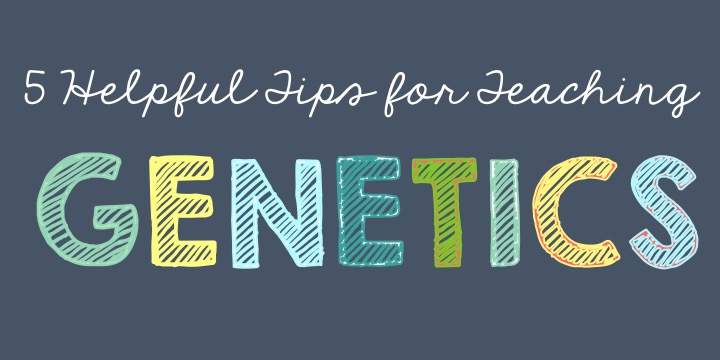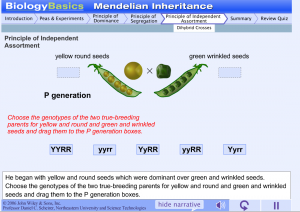Genetics is one of my favorite things to teach *cue sparkly harp music*. I really look forward to teaching genetics! And one thing that makes it so fun for me is discussing human genetics. Human genetics can be a bit mystifying, so I usually do not bring it up until we’ve discussed polygenic inheritance among other complex patterns, such as incomplete dominance. That is because most human traits are not Mendelian! For example, I have three children. Each one of my children has different colored eyes (hazel, brown, and blue). Students love discussing this stuff and bringing up their own families, too!
I’ve taught genetics many different ways and developed a list of 5 helpful tips for teaching genetics:
- Teaching meiosis before genetics can really help students understand alleles and what those letters mean. Teaching in this sequence can also help students master Mendel’s Laws.
- Mendel’s Laws are crucial for teaching genetics, but are not always easily understood. I’m a visual learner and I use a lot of visuals when I teach. This website from Wiley’s Global Resources provides visual animations to help support Mendel’s ideas and laws.
I have found this web site invaluable for those who need extra practice or need an little extra oomph for grasping concepts in class.
3. Most human traits are not Mendelian, most are polygenic. You can still have fun with this, but it might be nice to know that most traits, such as eye color, depend on more than one gene.
4. Students have more fun when they can connect. Try to do at least one activity involving human traits (even if that means pretending they are Mendelian for an afternoon)!
- Here is a complete list of human genetic myths that you can read for your consideration. But, that doesn’t stop us from making babies in biology class. Besides, I firmly believe we still do not know everything there is to know, and we are making new discoveries every day. I tell my students that we are going to pretend that traits are Mendelian for a day so that we can do our fun Making Babies Heredity Simulation. I really feel that you need to find a happy medium here- I don’t want to teach students that human traits such as eye color and earwax are Mendelian, but I also want them to connect and have fun. So we do a pretend day each year. Besides, it gives them Punnett square practice and I honestly could not imagine teaching genetics without it! The kids have too much fun!
5. It’s helpful to be aware of student misconceptions: Students tend to struggle with some terminology- it can be really difficult for students to differentiate between terms such as DNA, gene, and allele. Be sure to remind the students that there is in fact a difference, or maybe even ask them to compare them as a do-now, warm up, or bellringer.
- Are popular traits more dominant? No. You know this. Your colleagues know this. But sometimes we forget to mention this to our students. Check out my Exploring Human Traits Lab, in which students are asked to analyze this using your classroom as an example.
- Epigenetics- students should know that environment can play a role in the characteristics of organisms. Epigenetics studies changes in heritable traits that are outside the human genome. Here is a quick video you can show your students about how epigenetic tags can be passed on:
- Lastly, be sure to mention a few times along the way that mutations are not always harmful- and in fact some can be a good thing! The two examples I like to use are blue eyes (a neutral mutation) or even a turtle’s shell, which would be considered a positive mutation of its ancestor’s ribcage!
Veteran teachers, do you have any tips or advice when teaching genetics? I’d love for you to share them in the comments!
Stay Science Classy,
Vanessa

